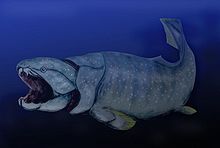 Below is the section on animal dreams from my video talk for the IASD Australian Regional Conference held last week in Sydney. I would be very interested in hearing from people whose dreams include types of animals NOT mentioned in my findings, to help us develop an even broader sense of oneiro-zoology (yes that’s a made up word!).
Below is the section on animal dreams from my video talk for the IASD Australian Regional Conference held last week in Sydney. I would be very interested in hearing from people whose dreams include types of animals NOT mentioned in my findings, to help us develop an even broader sense of oneiro-zoology (yes that’s a made up word!).
Animals: I searched the SDDb for many different types of animal-related words, but I’m sure I missed some, so this is an area needing improvement. What I found in this study [of 2087 total dreams, 1232 female and 855 male] was 16% of the female reports and 14% of the male reports including at least one animal reference. Consistent with what previous researchers have found, the children’s dreams in my sample have a higher percentage of animal references (24% for the girls, 20% for the boys). Does this mean children are “closer” to nature than adults? Perhaps. It does seem that a higher proportion of animals in children’s dreams (or should we say a diminished proportion of animals in modern Western adults’ dreams?) is a stable pattern across many studies.
The animals that appeared most often were, in order, dogs, cats, horses, bears, fish, snakes, birds, and insects. The first three—dogs, cats, and horses—are among the most familiar domestic animals. Bears are NOT domestic animals, and they actually appear most often to be aggressive, threatening creatures in dreams. Among different types of fish, sharks appear frequently like bears, as frightening predators, putting the dreamer in the harrowing position of prey, the hunted. In other dreams, however, ocean dwelling creatures like whales and dolphins reveal an amazing intelligence that teaches the dreamer something new about the natural world.


